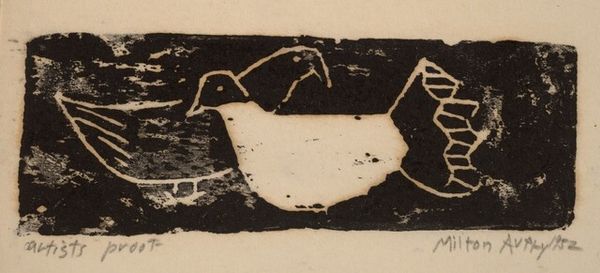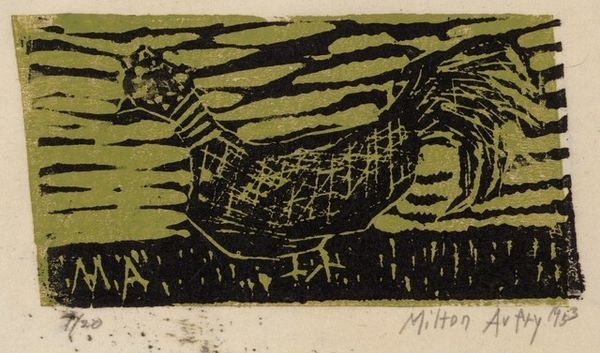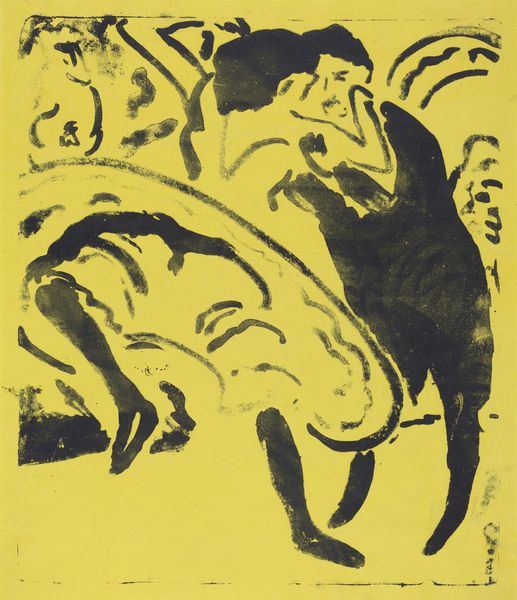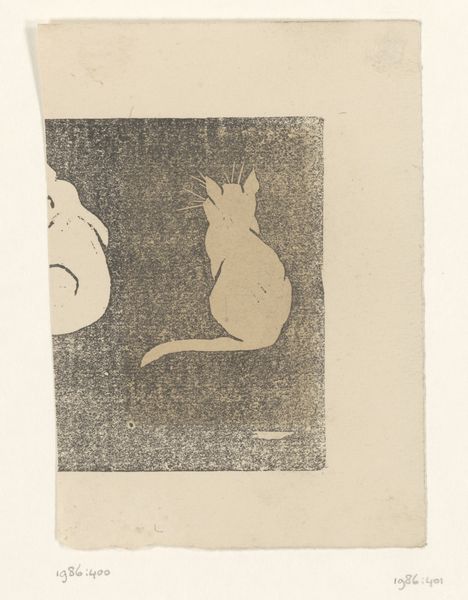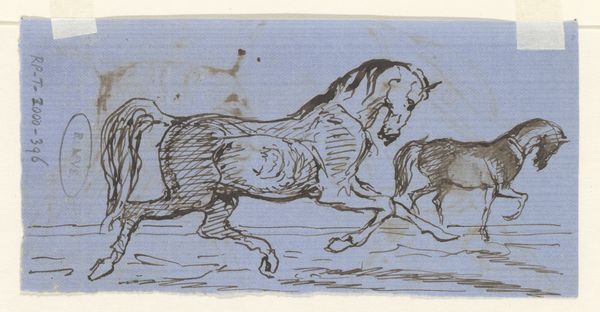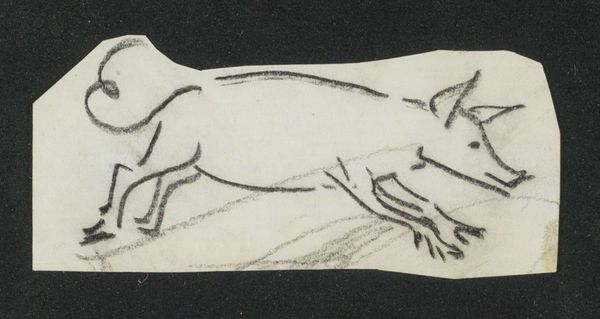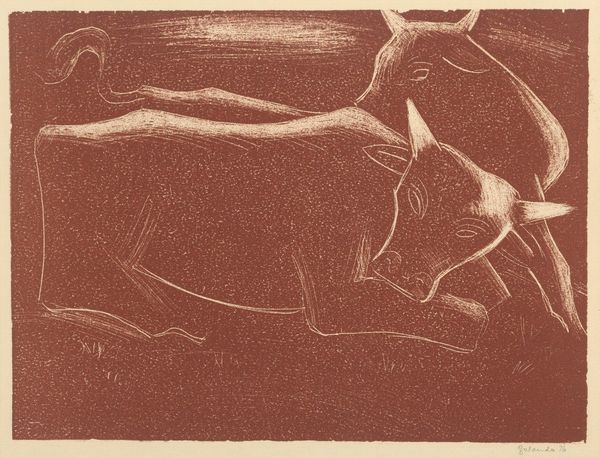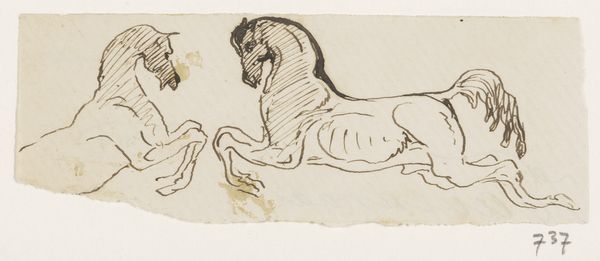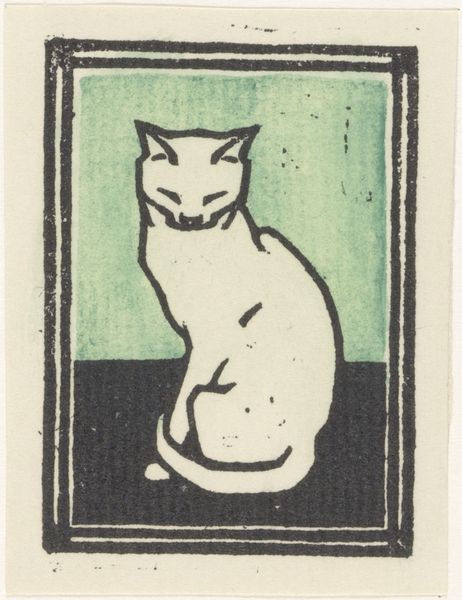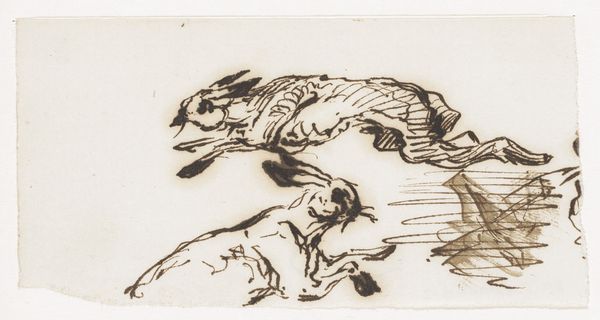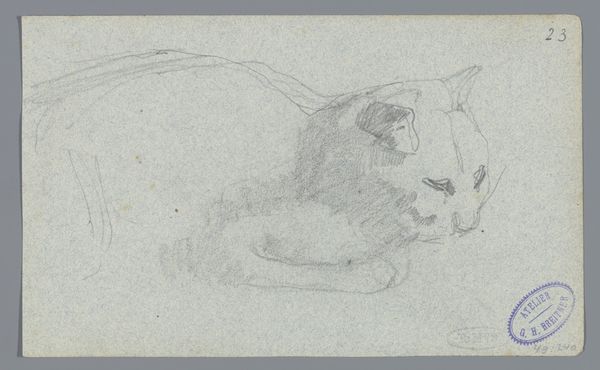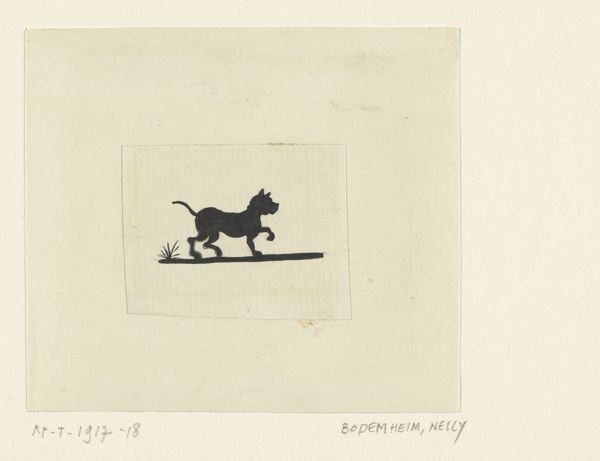
print, woodcut
#
abstract-expressionism
# print
#
landscape
#
figuration
#
woodcut
Dimensions: image: 6.4 x 14.4 cm (2 1/2 x 5 11/16 in.) sheet: 10.6 x 19.8 cm (4 3/16 x 7 13/16 in.)
Copyright: National Gallery of Art: CC0 1.0
Curator: What a delightful print! This is "Silly Hen" by Milton Avery, made in 1953. It's a woodcut, a medium Avery explored extensively. The work itself feels both playful and sophisticated in its simplicity. Editor: It definitely jumps out. That high-contrast yellow ochre and black palette is instantly striking. There's something really tactile about the texture, too; you can almost feel the grain of the wood and the pressure of the press. Curator: Exactly. Avery was deeply invested in the materials. His interest wasn’t just about representation. Consider how the limitations and affordances of the woodcut – the need to carve away, the pressure of the print – informed the reduction of the hen to its essence. And Avery made so many prints, blurring those art world distinctions of craft and commodity. Editor: I agree. But there’s more than just materiality going on here. The subject matter and abstraction link to wider shifts in American art at that moment, particularly regarding folk art. How are we to understand how such art circulated among different publics and classes? Curator: Good question. While some dismiss the "Silly Hen" as merely decorative, to me it challenges that high-art paradigm by asserting its roots in a vernacular, mass-produced, tradition. I love the idea of taking a humble subject matter, accessible to all, and elevating it with such elegant economy. Editor: Yet the work still operated within, and reinforces, the gallery system. The image—simplified and comical as it seems—becomes yet another example of the artist solidifying their persona in postwar America. There's a very clever dance between folk appeal and high-art ambition. Curator: So true! Perhaps it's the tension between the inherent reproducibility of a print and the desire to mark art, through originality. Ultimately, “Silly Hen" speaks to that complicated negotiation, doesn't it? Editor: Absolutely, it reminds us to consider what gets preserved and circulated, and whose stories museums are telling about American modernism. Curator: A piece that may seem “silly”, has definitely made us think hard. Editor: Yes, it’s prompted interesting questions about access, labor and status of imagery during this period!
Comments
No comments
Be the first to comment and join the conversation on the ultimate creative platform.
